|
This review page is supported in part by the sponsors whose ad banners are displayed below
|
|||||||||||||||
 |
|||||||||||||||
| The difference between stock and hot rod wasn't subtle. The latter sounded subjectively louder with far wider dynamic range. The sense of a layered, well defined space was greater. The slight dryness and edge of the stock DL III disappeared. Vocal and instrumental images exhibited greater focus and density. The Cullen sounded both smoother and fuller, offering more vibrant tone colors and richer, more tactile textures. Bass was deeper with greater weight. Percussion instruments shimmered and sparkled instead of sizzling like frying bacon, an all too common complaint with Redbook digital. The top end was more natural, subtle and sweeter. Pace and timing were more explicit. Backgrounds were subjectively blacker and quieter. I noted more low-level detail retrieval yet it was never analytical or in my face. There was also a sweetness and sense of involvement that frankly reminded me of... well, vinyl. I was gobsmacked with how good this DAC sounded! All this for $695? |
|||||||||||||||
| Music examples? How about opening a can of Southern fried whup ass with the Drive-By Truckers' The Dirty South [New West 6058], a fine collection of rockin' tunes that vividly convey life on the wrong side of the tracks south of the Mason-Dixon Line in Dick Cheney's America. The snap of the snare drum was crisp but not brittle. Kick drum was solid and weighty. Guitars had plenty of bite and rough physicality that almost fooled me into believing I was listening to vinyl. I got so caught up with this disc, I played it twice in one sitting. |
|||||||||||||||
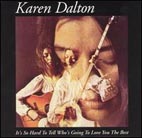 |
|||||||||||||||
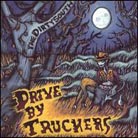 |
|||||||||||||||
| On Mariss Janson's rather fine recording of Shostakovich's 4th Symphony [EMI 557824], it was easier to follow individual lines with the Cullen. Instruments sounded more life-like and present. The scale and size of this work was more clearly conveyed plus the massed strings were sweeter and less wiry. The pulse and flow of the work felt more explicit and involving. The challenging yet hauntingly beautiful and unique voice of Karen Dalton that some unfairly compare to Billie Holiday sounded more tactile and emotive on the hot rod DAC. Missing was a slight edge on the top end of her range that was noticeable on the stock DL III and even the CEC TL53Z I reviewed recently. Dalton had the all-too-rare ability to get inside someone else's song and make it her own. Just take a listen to her interpretation of "When a Man Loves a Woman". The heart-felt plaintive emotion, pathos and desolation she could conjure up were all there for the taking with the Cullen DL III. It was there too with the stock version but it just didn't quite have the same feel. If you've never heard of Dalton, do yourself a favor and track down It's So Hard To Tell Who's Going To Love You The Best [Koch 7918] and In My Own Time [Light in the Attic 022] to wonder how such a singular talent with so much promise could die such an empty and pointless death. |
|||||||||||||||
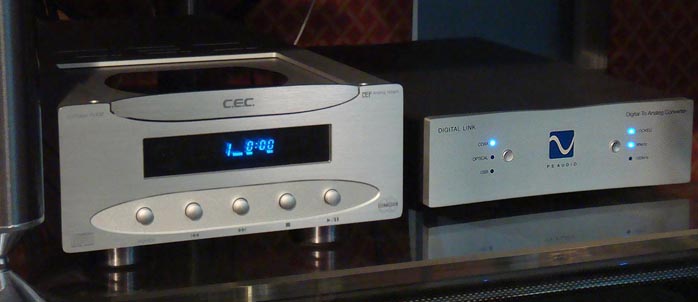 |
|||||||||||||||
Scriabin is a relatively new find for me and I've been working my way through his oeuvre when I stumbled across this gem featuring pianist Yevgeny Sudbin [BIS 1568]. Passionate, voluptuous, intoxicating and downright pornographic is how I would describe these wonderfully played and recorded piano pieces. If you buy one piano recording this year, make it this one. Reproduction of piano is the crucible whereby audio products, especially digital, are either made or broken. Here, the modded DL III was terrific. The attack, body, sustain and trailing edge of notes were spot on. With the lights out, I could almost reach out and touch that piano. |
|||||||||||||||
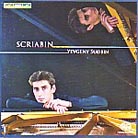 |
|||||||||||||||
|
| |||||||||||||||
Regardless of what I played, the Stage Three DL III consistently impressed me with its ability to reproduce music in a natural and involving manner. For the USB connection, I tried my IBM laptop and PC clone desktop I built a couple of years ago. I used Foobar v0.9.4.5 with the ASIO driver to bypass Windows Kmixer and a clean external USB hard drive. I disabled as many background Windows programs as possible. Even after all that, I still don't get the fascination with sending a digital signal from a PC to a DAC via a USB cable. It wasn't the DAC's fault. I have been consistently underwhelmed regardless of what USB-equipped DAC I have connected to a computer. It sounds okay but is nowhere near as good as a coaxial digital connection on a standalone transport/player. With the USB link, music sounded slightly vague, thin and lacking in tonal richness. My guess is that computers, while convenient, are hardly ideal for music reproduction. There are far too many variables involved, not to mention increased vulnerability to EM and RF noise. There's no doubt that the future of music playback is in some sort of magnetic storage mechanism but to my ears, there's still plenty of room left for improvement before I'll start ripping my discs to a computer. And I don't think the USB connection is the way to go either since it currently can't handle a 24-bit/192kHz signal. Interestingly, PS Audio has a fascinating new product debuting later this year called the Perfect Wave Transport that promises near perfect data retrieval from just about any digital medium while delivering the convenience and flexibility of the PC/Mac. Check out PS Audio's forum where at last count, there were over thirty pages of discussion regarding this intriguing product. The feature set is still in flux but I'll certainly be banging on Paul McGowan's door to secure a review sample when it's ready. |
|||||||||||||||
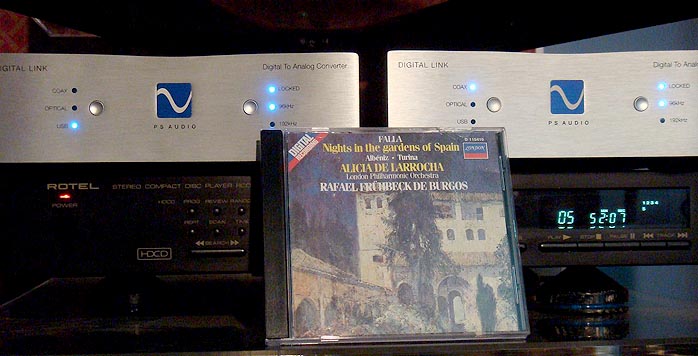 |
|||||||||||||||
Truth be told, I haven't been all that impressed with most if not all the upsampling players/DACs I have heard. What some folks hear as greater detail and enhanced spatial resolution has come across as bright, analytical, bland and characterless to me; so much so that I joined the digital flat-earth movement which resurrected older generations of ladder-type DACs minus any digital filtering. This last trait runs 180 degrees from current conventional wisdom regarding proper D-to-A conversion. Most of these DACs sport the old Philips TDA 1541/3 chips, simple resistive I/V conversion and either tube, discrete or even transformer-based analog output sections. On the pro side of the sonic ledger, non-oversampling DACs tend to project an analog-like balance with more vivid tonal colors, smoother if slightly rolled off highs plus a more natural sense of pace and flow. On the con side, image specificity suffers somewhat. Soundstage layering and depth is also narrower and shallower. Complex music tends to sound a little confused. Experts claim that its unsuppressed digital distortion and increased jitter I'm really hearing. Maybe so but it doesn't seem to bother me nor the many music lovers who have climbed aboard the NOS bandwagon. It's certainly a unique sound which some folks, particularly detail freaks, will not cotton to. |
|||||||||||||||
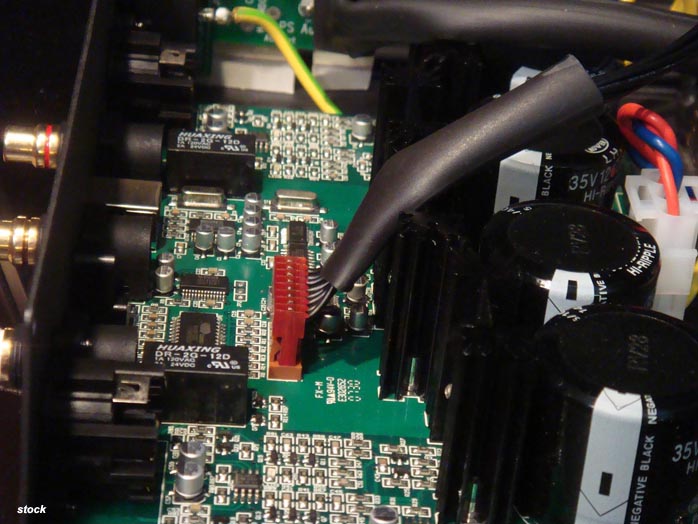 |
|||||||||||||||
|
Some time ago I settled on Audio Zone's Peter Daniel designed non-oversampling DAC-1 which for me has typically ruled the digital roost around here. While it doesn't shine light into all the corners of my recordings, the Audio Zone has a smooth, pleasing beguiling quality that I find irresistible. In many ways, the Stage Three DL III offered the best of both worlds; the detail and space of modern over/upsampling players and the warmth and musicality of the flat earth designs. Frankly, I enjoyed both and doubt I could choose one over the other, which is why I'm keeping them. Incidentally, I preferred the modified DL III over the internal DAC of the CEC TL53Z I reviewed recently. The 53 is still an excellent CD player and a top recommendation in its price range but the DL III boosted its performance significantly. In fact, the CEC with its already analog-like balance and Cullen DL III were a magical combination. I could live with this pairing for the long haul with nary a doubt. In conclusion, the stock DL III was an impressive performer. It displayed plenty of detail and a warmer tonal balance than I normally hear with modern digital. It's not perfect but for the price I have no serious complaints. Even if it retailed for $2,000, I'd still give it a thumbs up. After perusing various CES 2008 show reports during which my eyes glazed over from $15,000 preamps, $40,000 speakers and even a $24,000 music server, this audio tight wad is thankful for products like the Digital Link III that offer terrific sound for such a reasonable price. |
|||||||||||||||
| The Cullen Circuits Stage Three mod builds upon the fine-sounding stock DL III and takes it up to a level that I'd frankly expect to pay $3,000-$4,000 for. It provided an ideal mix of detail and musicality at a very attractive price. If you own a DL III, call the folks at Cullen and pimp out your DAC. If not, I highly recommend purchasing the Stage Three modded DL III or even the stock version if funds are tight. You can upgrade later. As stated above, I shan't return this DAC and will instead send a check to the folks at Cullen. And I fully intend to pester Mr. McGowan to claim review dibs on his upcoming Perfect Wave Transport which presently is slated to retail for the exceedingly fetching price of $1,695. Forget $24,000 music servers. This piece appears to be one the most promising digital playback products I've heard about yet. |
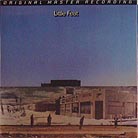 |
||||||||||||||
|
| |||||||||||||||
 |
|||||||||||||||
Quality of packing: Excellent and double boxed. Reusability of packing: Appears to be reusable several times. Quality of owner's manual: Easy to read and comprehensive. Condition of component received: Flawless. Completeness of delivery: Perfect. Website comments: Offers decent pictures, details on mods, products and pricing. Warranty: Three years parts & labor for stock and modded units. PS Audio equipment modded by Cullen Circuits is fully sanctioned by PS Audio. Human interactions: Professional, helpful and friendly. Pricing: Excellent. Final comments & suggestions: None |
|||||||||||||||
 |
|||||||||||||||
 |
|||||||||||||||
|
Cullen Circuits website
|
|||||||||||||||
 |
|||||||||||||||